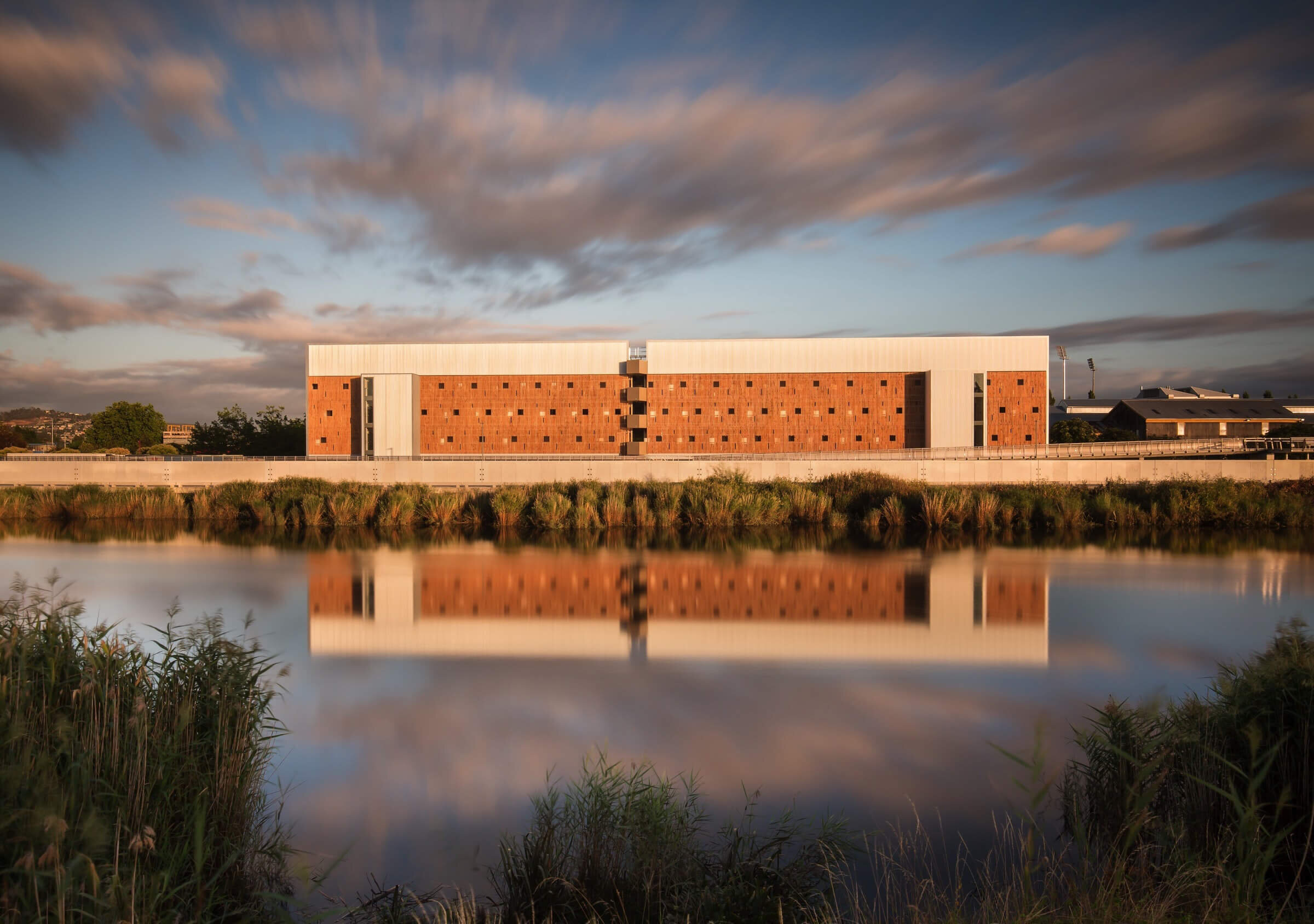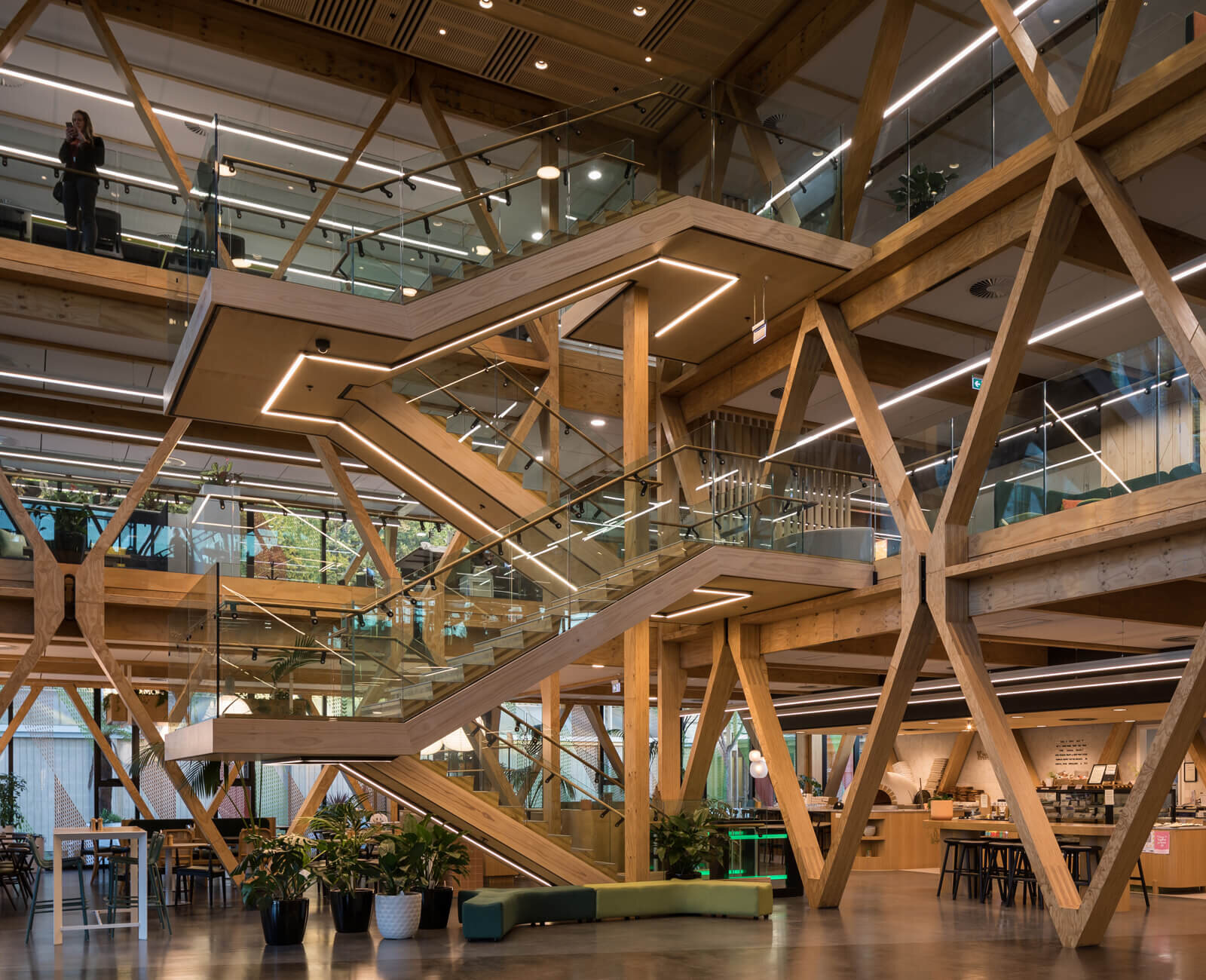
Mass Timber (CLT, GLT & LVL) Te Whare Nui o Tuteata, Scion Innovation Hub
Client: New Zealand Forest Research Institute Ltd (trading as Scion)
Architect:RTA Studio and Irving Smith Architects
Structural Engineer:Dunning Thornton
Head Contractor:Watts & Hughes
Location:Te Papa Tipu Innovation Park, Rotorua, New Zealand
Building Methodology:Mass Timber: XLam CLT (280m3)
Working alongside Scion and project partners, XLam assisted in the construction of Te Whare Nui o Tuteata, a commercial building designed specifically to showcase timber technology and sustainability in construction.
Te Whare Nui o Tuteata, otherwise known as the Scion Innovation Hub, is a three-storey 2,000m2 engineered timber building that acts as a demonstration project for timber technology and sustainability in construction.
As the largest and most experienced mass timber provider in Australasia, XLam were engaged to supply and install the project’s cross laminated timber (CLT), providing both technical and commercial input throughout the project. The distinct triangle entrance of Te Whare Nui o Tuteata features XLam CLT with intersecting glulam (GLT) triangular frames that create a triple-peak portal. XLam CLT was also used for the mid floors and landings, as well as the lift core, and some of the meeting room walls. XLam CLT AirStairs are a key feature of the building.
At the end of construction, an assessment was conducted to calculate the entire environmental impact of the building. It was found that the volume of timber used throughout the project cancelled out the amount of CO2 emissions produced during the build. This means that Te Whare Nui o Tuteata is one of few commercial buildings in the world to achieve net-zero embodied carbon emissions.
Design & Structure
Te Whare Nui o Tuteata showcases timber technology in construction by utilising different engineered timber products to form the building’s floors, stairs, lift shaft, partitions and primary structural bracing. The approach of displaying mass timber in many forms was part of the architectural concept, with the building’s hallmark timber diagrid used to form the structural bracing, believed to be a world first of its size.
The 8-metre-tall timber diagrid frames and entry canopies use GLT and laminated veneer lumber (LVL). The diagrid comprises of 88 diamond and triangleshaped frames that use innovative dovetail node joints to slot and glue together in a celebration of engineered timber craft. The connections between the diagrid sections consist of flexible U-shaped steel plates (UFP plates) that act as energy-dissipation devices between the timber. The connections also include a component designed to deform during severe earthquakes in order to protect the building.
‘We wanted to provide the opportunity for the wider community to experience the future that a forest-based circular bioeconomy can deliver and provide the public with examples of the research Scion is doing to support a low-carbon and renewable future for Aotearoa.’
Julian Elder, Scion CEOThe bespoke Te Whare Nui o Tuteata entrance is constructed using XLam CLT and three intersecting GLT triangular frames to create a triple-peak portal. One central, two-storeys-high equilateral triangle, flanked by two lower-height triangles. The triple triangles crisscross, creating a dramatic geometry with two small triangles at its base fixing its six feet solidly to the ground.
The celebration of timber continues with with XLam CLT floors, lift shaft panels, meeting room walls and doors, along with two stunning, cantilevered staircases (XLam CLT AirStairs) “floating” on either side of the atrium.
Sustainability
Over 550m3 of timber was used throughout the building. This translates to a total of 454kg of carbon sequestered from the atmosphere and stored within the timber. This is the same amount of CO2 emissions produced throughout the build, including materials such as steel, glass and concrete, as well as the manufacturing, transportation, and installation. With one cancelling the other out, Te Whare Nui o Tuteata achieved net-zero embodied carbon emissions; possibly the first building in New Zealand of this size to be able to make this claim.
Outcome
Through combined efforts, Scion, XLam and project partners, were able to create space that truly showcases what is possible from timber through innovation.

Related case studies
-

Plant and Food Research: Seafood Research Centre
-

University of Tasmania Inveresk Student Residences
-

‘The Pavilion’ - Monash University Business School
-

Adelaide Oval Hotel













